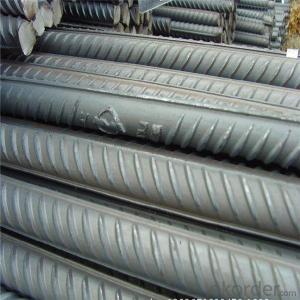Iron rods for construction concrete for building metal
- Loading Port:
- Tianjin
- Payment Terms:
- TT OR LC
- Min Order Qty:
- 1000 m.t.
- Supply Capability:
- 17497 m.t./month
OKorder Service Pledge
OKorder Financial Service
You Might Also Like
Item specifice
bars of steel commonly used in construction, especially for reinforcing concrete structures such as driveways,
foundations, walls, and columns. These bars come in different sizes and strength grades, and can be smooth
or may include deformations that provide greater adhesion for concrete poured over the bars. When used in poured
concrete, the bars are typically placed in a grid pattern, the concrete poured over them, and then readjusted to
maintain the proper shape while the concrete sets. Steel rebar can be purchased from a number of manufacturers
and is often found at construction retailers or large hardware stores
Product Description :
Chemical composition (%): | Steel | C | Si | Mn | P | S | Ceq | ||||
HRB335 |
0.25 |
0.80 |
1.60 |
0.045 |
0.045 | 0.52 | |||||
HRB400 | 0.54 | ||||||||||
HRB500 | 0.55 | ||||||||||
Mechanical properties | Steel | Rel/ MPa | Rm/ MPa | A/ % | Agt/ % | ||||||
≥ | |||||||||||
HRB335 | 335 | 455 | 17 |
7.5 | |||||||
HRB400 | 400 | 540 | 16 | ||||||||
HRB500 | 500 | 630 | 15 | ||||||||
Package: | Standard export packing or as customer's request | ||||||||||
Application: | Construction, building, bridge, road. ect | ||||||||||
Payment terms | 1).100% irrevocable L/C at sight. | ||||||||||
Delivery time | 15-30 days after receipt of L/C or deposit by T/T | ||||||||||
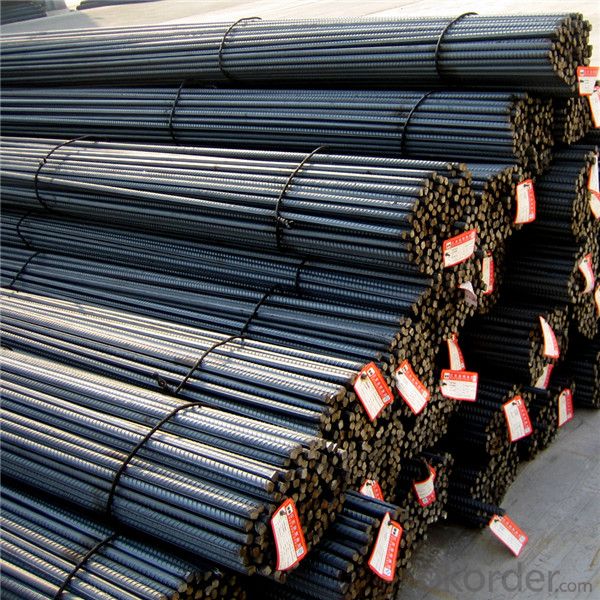
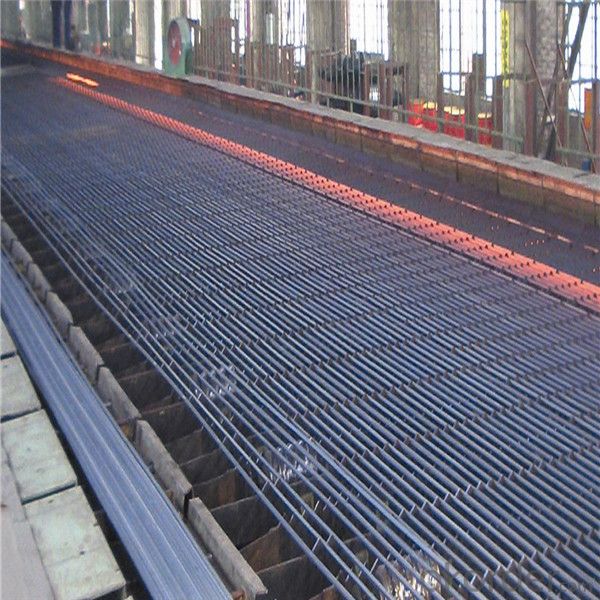
Features
1、Pure steel quality, stable chemical contents, small tolerance.
2、Constant Quality, good drawing performance.
3、High dimension accuracy degree, accuracy degree of Level C up to 80%, smooth surface, less scale, easy to be pickled.
4、Automatic bundling with 4 lines by Machine in tidy and good looks
5、Big high quality percentage, small coil percentage, and heavy coil weight for Hard Coil.
6、High sorbitizing percentage.
Packing:
In bundles, each bundle weight 3.5 tons. Load by container or by bulk verssel.
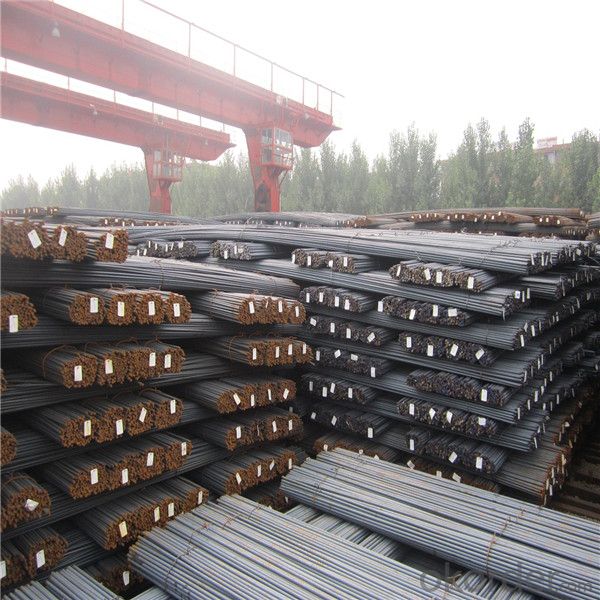
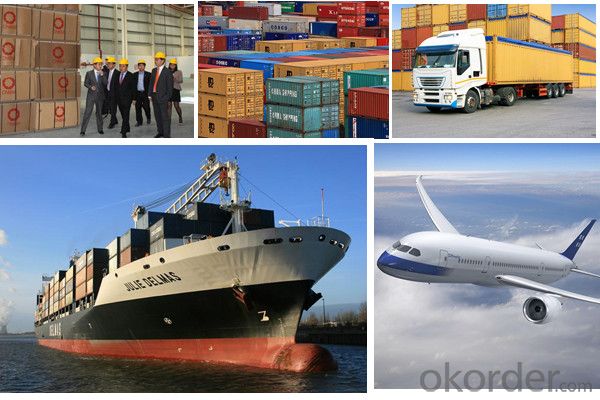
FAQ:
1.Q: What's your MOQ(minimum order quantity)?
A: One full container, mixed acceptable .
2. Q: What's your packing methods?
A: Packed in bundle or bulk ..
3. Q: How can I buy CNBM products in my country?
A:Please send us an inquiry or email ,we will reply to you if there is distributor in your country
4. Q: Can we visit your factory?
A: Warmly welcome. Once we have your schedule, we will arrange the professional sales team to follow up your case.
5. Q: How long does it take to get the product if i place an order?
A:With the process of your requirements,we will pack and deliver in 3-7 days. If it is by sea shipment,it will take 15-45 days depending on different locations
- Q:How do steel rebars affect the overall structural stability of a building?
- Steel rebars play a critical role in enhancing the overall structural stability of a building. These reinforcing bars are commonly used in concrete structures to provide additional strength and support to the building's framework. By embedding steel rebars within the concrete, the overall structural integrity and load-bearing capacity of the building are significantly increased. The primary function of steel rebars is to reinforce and strengthen the concrete, which is vulnerable to tension forces. Concrete has excellent compressive strength but has limited resistance to tensile forces. Steel rebars, being highly tensile in nature, are able to counteract these tension forces and prevent the concrete from cracking or failing under stress. Rebars are strategically placed within the concrete to distribute and transfer loads more efficiently. This redistribution of forces helps to reduce the chances of localized structural failures and ensures that the building can withstand various external forces, such as wind, seismic activity, or heavy loads. Moreover, steel rebars also enhance the durability and longevity of a building. By reinforcing the concrete, rebars help to minimize cracking and prevent the propagation of cracks. This is particularly crucial in areas prone to seismic activity, as the rebars can absorb and dissipate the energy generated during an earthquake, reducing the risk of collapse. In addition to their role in ensuring structural stability, steel rebars also offer flexibility in design. They can be shaped and bent into various configurations, allowing architects and engineers to create complex and innovative structures with ease. This flexibility in design not only improves the aesthetics of the building but also enables the construction of unique architectural features that would otherwise be challenging or impossible to achieve. In summary, steel rebars are essential for enhancing the overall structural stability of a building. By reinforcing the concrete, they increase its load-bearing capacity, improve resistance to tensile forces, and distribute loads more efficiently. Their presence significantly reduces the risk of structural failure, enhances durability, and allows for greater design flexibility.
- Q:How do steel rebars affect the bond strength between concrete and reinforcement?
- The bond strength between concrete and reinforcement is greatly improved by steel rebars, which play a vital role in this enhancement. When rebars are present in concrete structures, they create a mechanical interlock between the two materials, resulting in a bond that is not only stronger but also more durable. To begin with, the presence of rebars provides a larger surface area for the concrete to adhere to. The rough texture of the steel surface effectively allows the fresh concrete to bond, resulting in a strong bond. Additionally, this increased surface area helps to distribute loads more evenly, reducing stress concentrations and ultimately enhancing the overall structural integrity of the concrete. In addition, rebars act as a medium for transferring loads, ensuring that forces are effectively transmitted between the concrete and reinforcement. As concrete is typically weak in resisting tensile forces, the rebars bear these forces and effectively carry them across the concrete-rebar interface. This prevents cracks from spreading and helps to maintain the stability and strength of the structure as a whole. Furthermore, the presence of rebars helps to control cracking in concrete. When concrete undergoes shrinkage or experiences temperature variations, it tends to crack. However, with the presence of rebars, these cracks are limited or minimized. The rebars act as reinforcement, holding the concrete together and preventing the propagation of cracks. Moreover, steel rebars improve bond strength by providing anchorage. When rebars are embedded into the concrete, they create a mechanical connection that prevents the rebar from slipping or being pulled out. This anchorage ensures that the bond between the concrete and reinforcement remains intact, even under high loads or external forces. In summary, steel rebars significantly enhance the bond strength between concrete and reinforcement. They provide a larger surface area for adhesion, act as load transfer mediums, control cracking, and offer anchorage, resulting in a bond that is stronger and more durable. Their presence contributes to the overall stability and longevity of concrete structures.
- Q:Can steel rebars be used for both residential and commercial constructions?
- Yes, steel rebars can be used for both residential and commercial constructions. Steel rebars are common reinforcement materials used in concrete structures to provide strength and stability. They are suitable for various construction projects, whether it is a residential house or a commercial building. The use of steel rebars ensures durability and structural integrity in both types of constructions. Additionally, steel rebars can be customized to meet specific project requirements, making them versatile and suitable for various applications in both residential and commercial construction.
- Q:Can steel rebars be used in wind turbine foundation construction?
- Indeed, wind turbine foundation construction can make effective use of steel rebars. In the construction industry, it is customary to employ rebars for reinforcing concrete structures, thus enhancing their strength and durability. When it comes to wind turbine foundation construction, it is customary to incorporate steel rebars into the concrete itself in order to offer structural support and avert any potential cracking or failure. By distributing the load and forces exerted by the wind turbine, these rebars guarantee the foundation's stability and longevity. Furthermore, steel rebars possess remarkable tensile strength, rendering them well-suited to withstand the dynamic forces and vibrations that wind turbines experience. Hence, incorporating steel rebars into wind turbine foundation construction is a widespread and efficacious practice.
- Q:What are the common sizes of steel rebars used in construction?
- The common sizes of steel rebars used in construction typically range from #3 (3/8 inch diameter) to #11 (1 3/8 inch diameter).
- Q:Difference between round bar and threaded steel in use
- Because steel for low alloy steel, its price is higher than that of low carbon steel, or construction units, design units, often on the general civil construction of the "practical" point of view, reduce the quality of the project, and the use of low carbon steel instead of rebar. For large engineering projects, often bribed "project inspector after" to replace "Choulianghuanzhu rib steel bar, reduce the construction cost.
- Q:What is the role of steel rebars in the construction of power transmission towers?
- The role of steel rebars in the construction of power transmission towers is to provide structural reinforcement and strength to the concrete foundations and columns. Steel rebars act as a framework within the concrete, helping to distribute the load and withstand the forces exerted on the towers, including wind, seismic activity, and the weight of the transmission lines. They enhance the overall stability and durability of the towers, ensuring their ability to safely support and transmit electrical power.
- Q:Can steel rebars be used in structures with limited construction permits?
- Structures with limited construction permits often permit the use of steel rebars, given their widespread application in construction for their robustness and endurance. Nevertheless, it is crucial to refer to the construction permits for detailed regulations and constraints. These permits may impose limitations on the materials employed, encompassing rebar dimensions and composition. To ensure conformity with the construction permits and ascertain the permissibility of steel rebars in a specific structure, it is advisable to seek guidance from a structural engineer or the local building authority.
- Q:What is the lifespan of steel rebars in different environments?
- The lifespan of steel rebars can vary depending on the environment in which they are employed. Typically, steel rebars are highly durable and can last for a considerable period. Nevertheless, the longevity of these materials can be affected by different environmental conditions. In a dry and non-corrosive setting, such as indoors or in a well-maintained building, steel rebars can endure for several decades or even longer. The absence of moisture and corrosive substances aids in maintaining the steel's integrity, minimizing the risk of deterioration. In a marine or coastal environment, where continual exposure to saltwater and high humidity occurs, the lifespan of steel rebars may be reduced. The corrosive properties of saltwater can expedite the corrosion process, potentially shortening the rebars' lifespan. In such scenarios, special coatings or treatments can be applied to the steel rebars to enhance their resistance to corrosion and prolong their lifespan. Similarly, steel rebars employed in areas with elevated levels of air pollution or industrial emissions may also experience accelerated corrosion. Airborne pollutants, such as sulfur dioxide or sulfuric acid, can interact with the steel and result in rust formation. Regular maintenance and cleaning of the rebars can help mitigate the impact of these corrosive substances and extend their lifespan. It is crucial to note that the quality of the steel rebars and construction practices also significantly influence their lifespan. The use of high-quality rebars that meet industry standards and adherence to proper installation techniques can greatly enhance their durability and longevity. In conclusion, while steel rebars generally have a long lifespan, the specific environment in which they are utilized will determine how effectively they serve their purpose. By considering environmental factors and implementing appropriate corrosion prevention measures, the lifespan of steel rebars can be maximized, ensuring the safety and durability of the structures in which they are incorporated.
- Q:Can steel rebars be used in earthquake-prone areas?
- Yes, steel rebars can be used in earthquake-prone areas. Steel rebars are commonly used in construction in seismic zones as they provide reinforcement and enhance the structural integrity of buildings and infrastructure. Their high tensile strength and ability to absorb and distribute the forces generated during an earthquake make them an effective solution for earthquake-resistant construction. Additionally, steel rebars can be designed and installed in a way that allows them to withstand the specific seismic forces expected in a particular area, further ensuring the safety and stability of structures in earthquake-prone regions.
1. Manufacturer Overview |
|
|---|---|
| Location | |
| Year Established | |
| Annual Output Value | |
| Main Markets | |
| Company Certifications | |
2. Manufacturer Certificates |
|
|---|---|
| a) Certification Name | |
| Range | |
| Reference | |
| Validity Period | |
3. Manufacturer Capability |
|
|---|---|
| a)Trade Capacity | |
| Nearest Port | |
| Export Percentage | |
| No.of Employees in Trade Department | |
| Language Spoken: | |
| b)Factory Information | |
| Factory Size: | |
| No. of Production Lines | |
| Contract Manufacturing | |
| Product Price Range | |
Send your message to us
Iron rods for construction concrete for building metal
- Loading Port:
- Tianjin
- Payment Terms:
- TT OR LC
- Min Order Qty:
- 1000 m.t.
- Supply Capability:
- 17497 m.t./month
OKorder Service Pledge
OKorder Financial Service
Similar products
New products
Hot products
Related keywords
